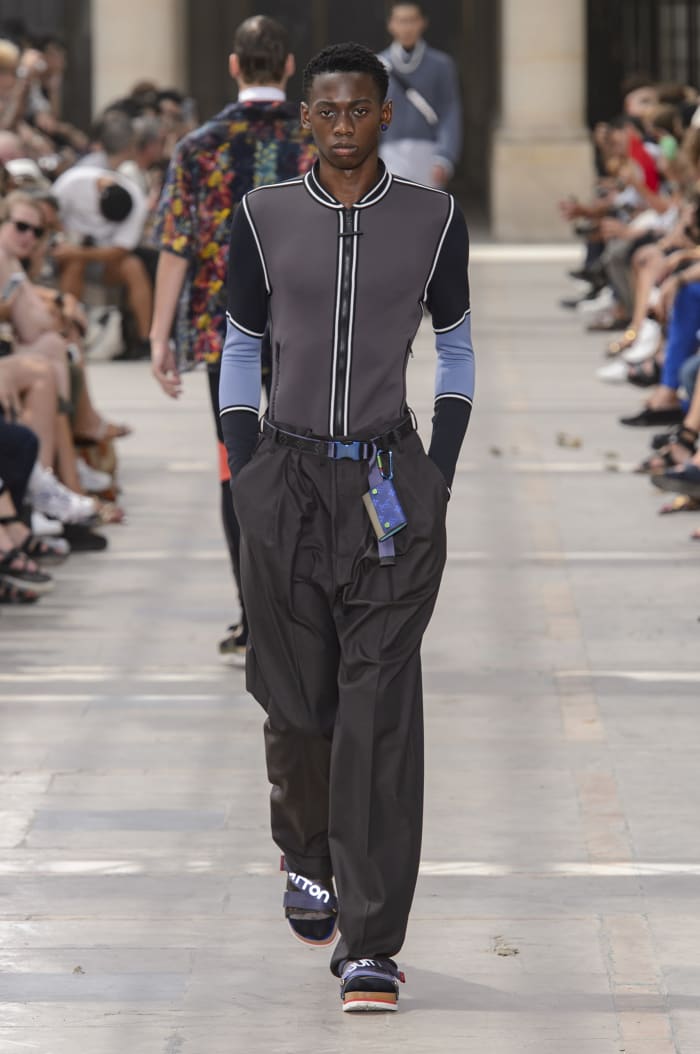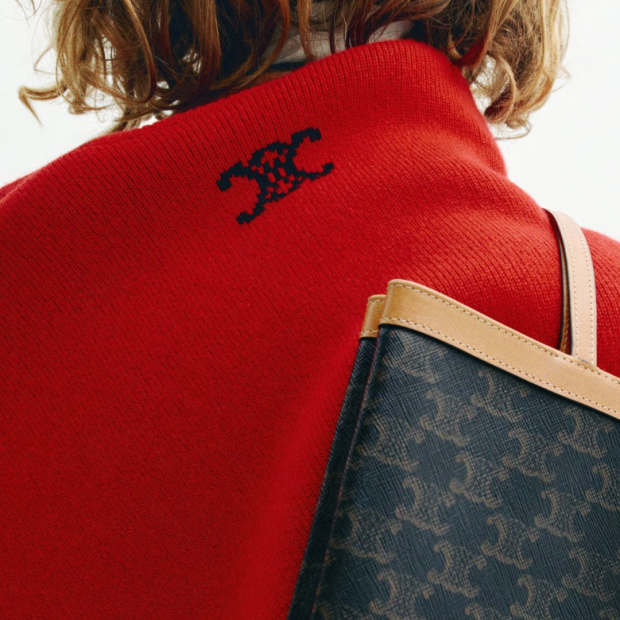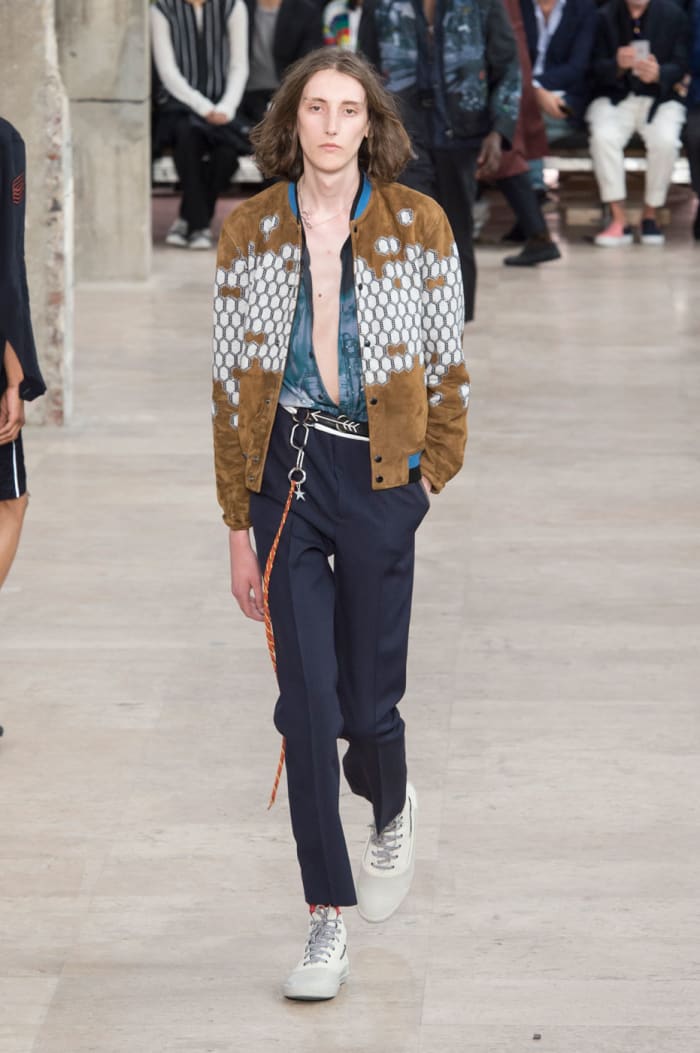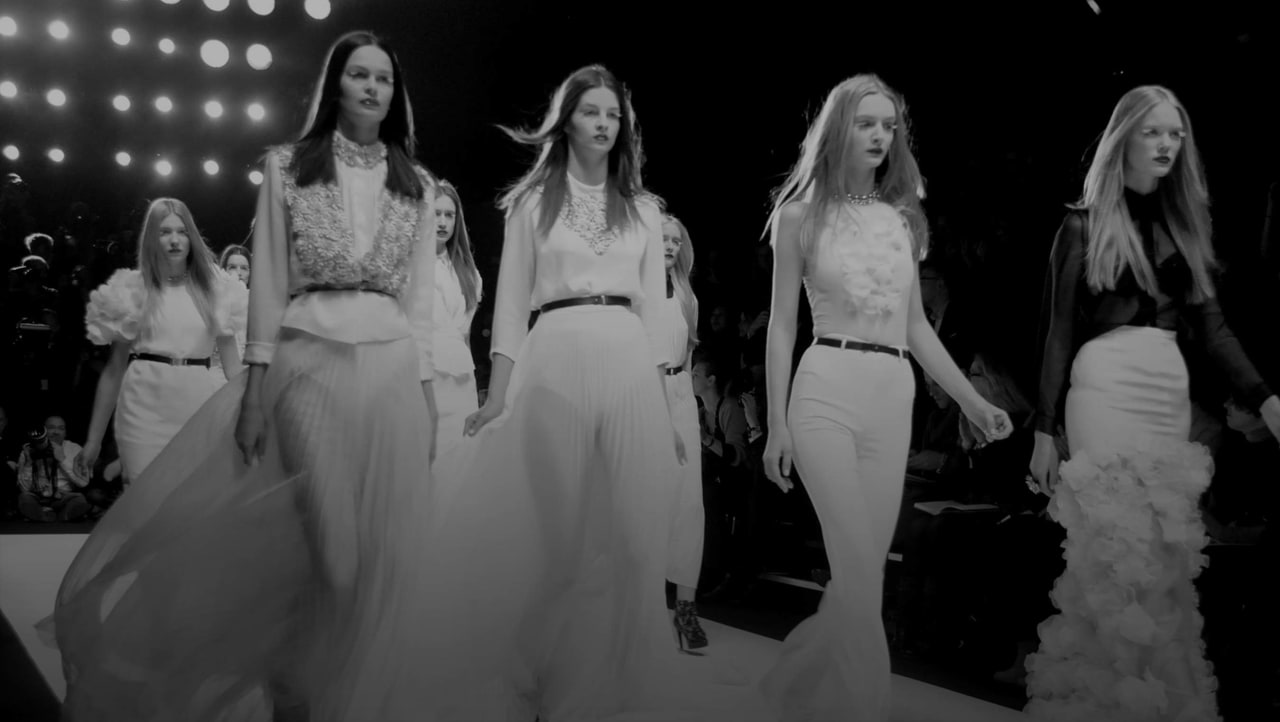The Enduring Appeal of the Carabiner in Menswear
If every menswear designer was concerned with addressing the reality of how most men actually dress, we would likely see far fewer who push comically oversize puffer coats and more who take their cues from, say, the business casual kingpins at UNTUCKit. Practicality is not always the domain of the creative type, nor should it be. But, every once in a while, innovative men's fashion minds come together to solve a problem grounded in our collective, male, everyday struggles.
"Menswear right now is obsessed with carrying shit," says Jacob Gallagher, columnist and men’s fashion editor of the Off-Duty section of The Wall Street Journal. "That's something that we're trying to grapple with in a certain way."
God may have given us two hands, but He also gave us a desire to transport enough electronics and ephemera on our person that, in recent months, fanny packs were rechristened "cross-body bags," "hip bags" and "belt bags" — or, if you must, "clout packs" — and given a fresh moment of functional fashion relevance courtesy of the devout trend revivalists at Gucci, Supreme and Balenciaga.
This need to take it all with us may also explain why carabiners — metal clips with safety closures often used by rock climbers to attach to safety ropes, as well as by handymen and rock tour roadies to tote keys — are experiencing a quiet renaissance of their own. English label Cottweiler styled their Fall 2018 show with ample carabiners dangling from belts and bags. Heron Preston designed some to be worn around the waist as part of his Fall 2017 delivery. You can find them swinging from necklaces at Kim Jones's final collection for Louis Vuitton; he also included an iridescent version in the collaborative product he created last year for Vuitton alongside Japan's Fragment Design.
As with countless other men's trends, Japanese labels are at the epicenter of carabiner adoption. Aside from Fragment, White Mountaineering hooked them onto sweaters for fall, Master-piece currently offers styles with leather accents and streetwear brand Uniform Experiment recently paired up with the jewelry company IVXLCDM to charge a reported $18,000 for a gold version covered in diamonds.
For about 1/1800th of that price, you also can find one at REI or your local hardware store, as model, artist and carabiner devotee David Alexander Flinn does. Flinn has carried a carabiner since he was a teenager. "I worked construction jobs since I was 15, and guys on the jobs always had carabiners or different clasps that had hundreds of keys on them," he says. "I carry all my keys, my key cards and passes on it."
Keys are the most obvious item to hang from a carabiner, but Flinn says they have more versatility than a traditional keychain does. "A carabiner is great, because sometimes I'm carrying five bags, and I'll use the carabiner to hold a lighter bag from my belt loop, so my hands can carry the heavier [ones]," he explains. "Plus, it doesn't hurt that I love how they look."
Recommended Articles
When worn with his skinny jeans, gold chains and occasional python cowboy boots, Flinn's carabiner registers more "I'm with the band" than "I'm about to scale a Teton." While the association between carabiners and backstage life is strong — by way of example, note how many characters in Cameron Crowe's short-lived Showtime series "Roadies" had at least one swinging from their waist — Gallagher connects menswear designers' recent interest in the accessory to the stylistic appeal of its mountain climbing roots.
"Menswear right now is cycling through a ton of sports and a ton of different athletic activities in search of whatever is going to be the next trend," he explains, citing the continued presence of skate and surf-influenced clothing. "As we head into summer, for the last couple of years, rock climbing is one that people have gravitated toward."
Jones's Louis Vuitton carabiners were featured in a collection inspired by getting outdoors, both in Africa, and, perhaps most tellingly, Wyoming, home to some of North America's most popular climbing destinations. Those craggy allusions are also at the heart of the carabiners used by White Mountaineering, Heron Preston and Cottweiler.
"It has an aesthetic that feels very individualistic," Gallagher says of rock climbing. "I think that designers like that. Rock climbing is outdoorsy, and it’s also kind of, to be honest, drug-related." (Despite this, most climbers on a Reddit thread called Cannabis and Climbing don't recommend smoking before summiting; on the other hand, Wyoming has a popular climb known as Cocaine Rodeo.)
"It clicks all these boxes that are different elements that designers are fixated on right now," Gallagher says.
Still, as many men have proven perfectly content keeping their keys in their pockets since, presumably, the invention of both keys and pockets, is the necessary behavior change too great for carabiners to ever truly take off, or can we expect to see more designers offer them as aesthetically appealing, functional solutions to our menswear conundrum of the moment? "You'd have to really sell me on the necessity of having a carabiner," Gallagher, who has vouched for the fanny pack, concludes. "A carabiner does seem like a very deliberate, extraneous accessory to have."
In other words, don't be silly: you bet your man bag we can expect to see more. After all, with a nebulous mainstream value prospect like that, what designer could resist making a carabiner of their own?
Want the latest fashion industry news first? Sign up for our daily newsletter.





